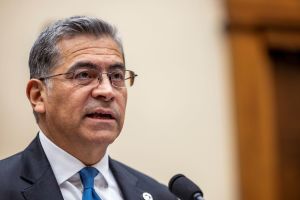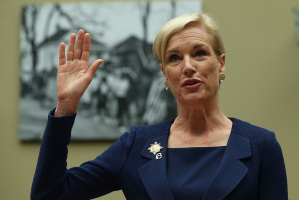Health Insurance Costs Skyrocket and Insured Lose Doctors Under ObamaCare
Across the nation, Americans are starting to see what ObamaCare really means - and it's not pretty.
Californians who buy insurance on the new "Covered California" exchange better not expect care at Cedars-Sinai Medical Center, the prestigous LA academic hospital: Their plans won't cover such top-drawer care. Indeed, many in the Golden State will have to give up doctors and hospitals they now use, if they want subsidized coverage.
That's one of many truths omitted amid the fanfare last week as Covered California unveiled the plans it will offer starting Oct. 1. The unveiling of what will be the country's largest exchange naturally attracted nationwide interest, with ObamaCare boosters declaring victory.
Rep. Nancy Pelosi (D-Calif.) recently boasted that California "will offer more than a dozen comprehensive health plans without the fear of higher premiums." Not true. Premiums for individual coverage on the exchange will average $321 a month for "silver" plans (the second-cheapest). That's about 50 percent higher than individual coverage sold last year to Californians on EHealthinsurance.com, a popular insurance marketplace.
ObamaCare specifies a list of benefits, whether you want them or not. The higher premiums will also cover $100 billion in taxes on insurers over the next decade and the cost of covering chronically ill people previously excluded from individual health plans.
To keep premiums from being even higher, insurers limit access to doctors and hospitals. Blue Shield of California, for example, will offer an exchange plan that includes only 36 percent of its regular physician network.
For the uninsured, it's better than no coverage. But for the rest, a 50 percent premium hike for fewer choices is far from an improvement.
In you want the federal subsidy, available to individuals earning up to $45,960 a year (and households of four with $94,200 total income), you have to buy on the exchange.
The tradeoff is limited access. Blue Shield offers care at UCLA Medical Center to its regular customers, but not to those buying exchange plans.
Insurers everywhere are concluding that low cost will be king on exchanges. Most exchange customers will be low-income, sensitive to price differences and dependent on the federal subsidy. To compete on cost, these insurers are limiting networks to hospitals and doctors willing to accept markedly lower fees.
This is Costco-style health care, similar to Medicaid. Only a small fraction of doctors are willing to accept these fees.
The truth gap between what ObamaCare supporters claim and what exchange consumers will actually get is wider than San Francisco Bay.
Maine, for example, hasn't officially announced its exchange plans yet, but already consumers are outraged to learn that they too will have to give up their current doctors and hospitals if they enroll on the exchange.
Mainers are upset to learn that they'll have to change doctors and hospitals and possibly travel long distances for care covered by an exchange plan. Anthem, the state's largest insurer, has devised a narrow network of hospitals to cut costs, excluding one third of hospitals in the southern half of the state and physicians who practice at them.
Most ObamaCare boosters are urging the young and healthy to sign up. But how long will these customers continue to pay their monthly premium? The risk is high that ObamaCare is headed for a premium default crisis similar to the mortgage crisis and college loan defaults.
Take a healthy single man in California who earns $29,130 per year ($14 an hour) - the very customer the Obama administration is targeting. If he buys the cheapest ("bronze") plan, after a federal subsidy he'll still have to write a check each month for $137. The feds say that's "affordable." But how many months will go by before he decides to spend that $137 on a car payment instead?




























